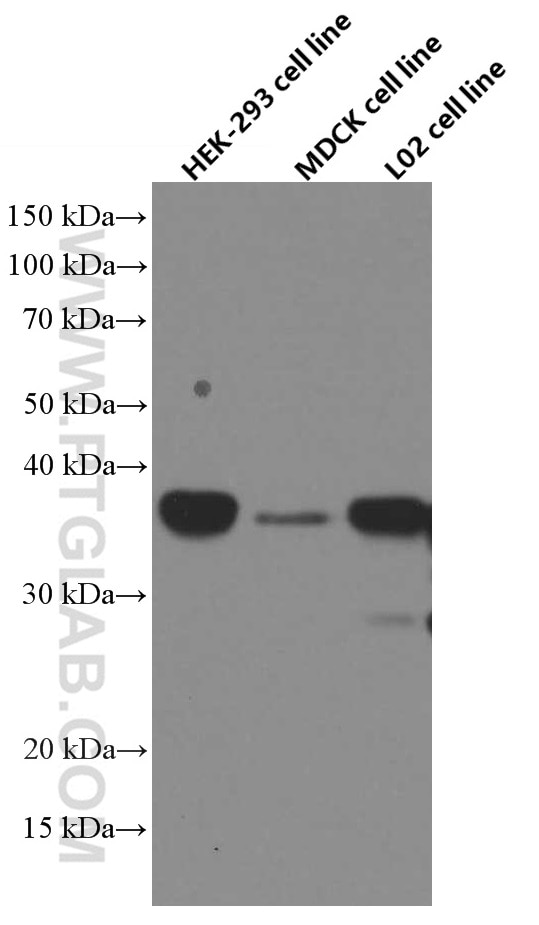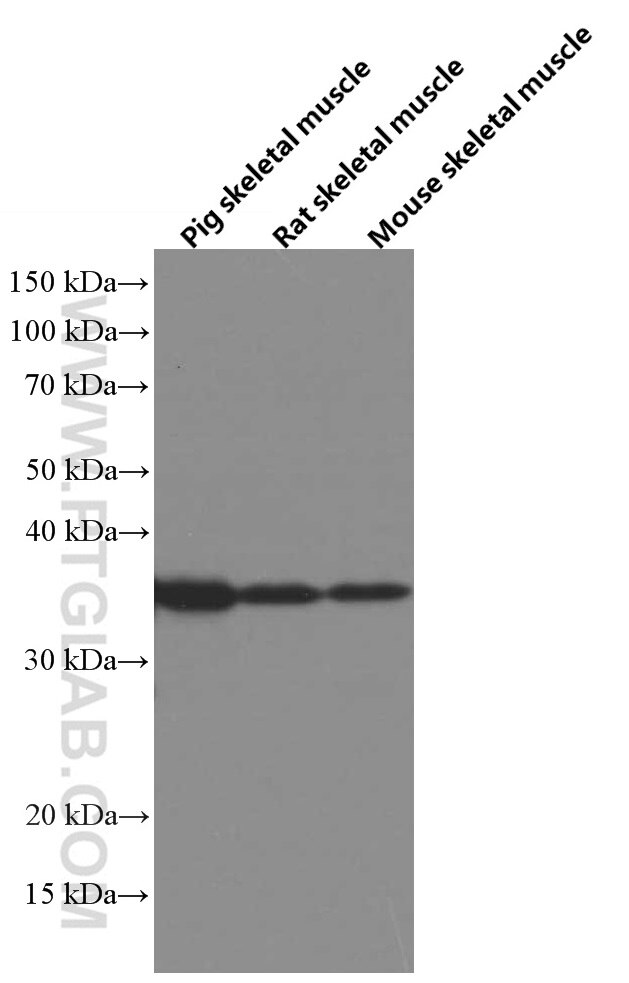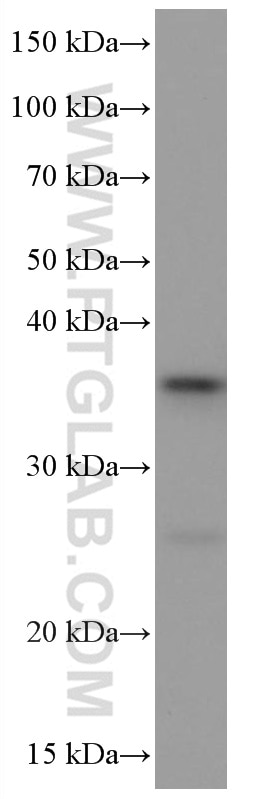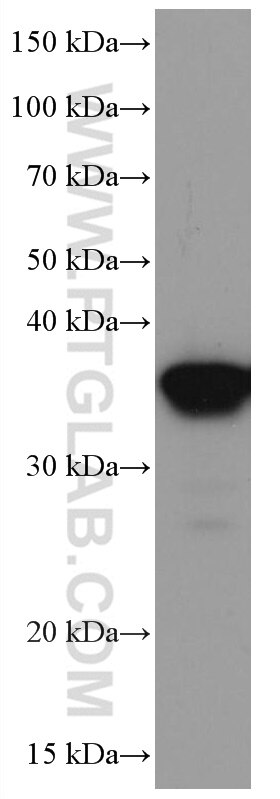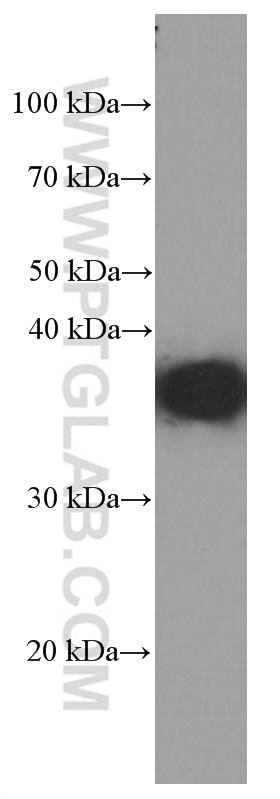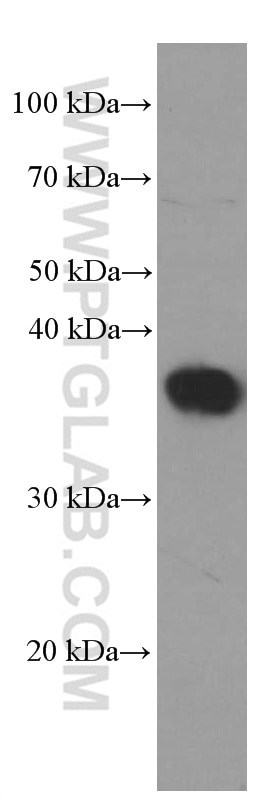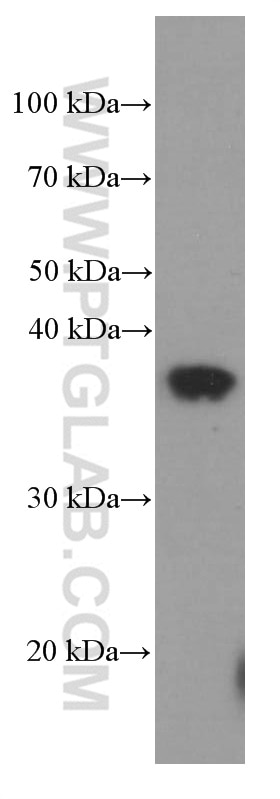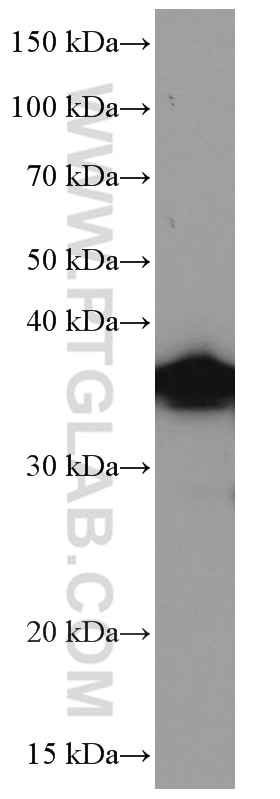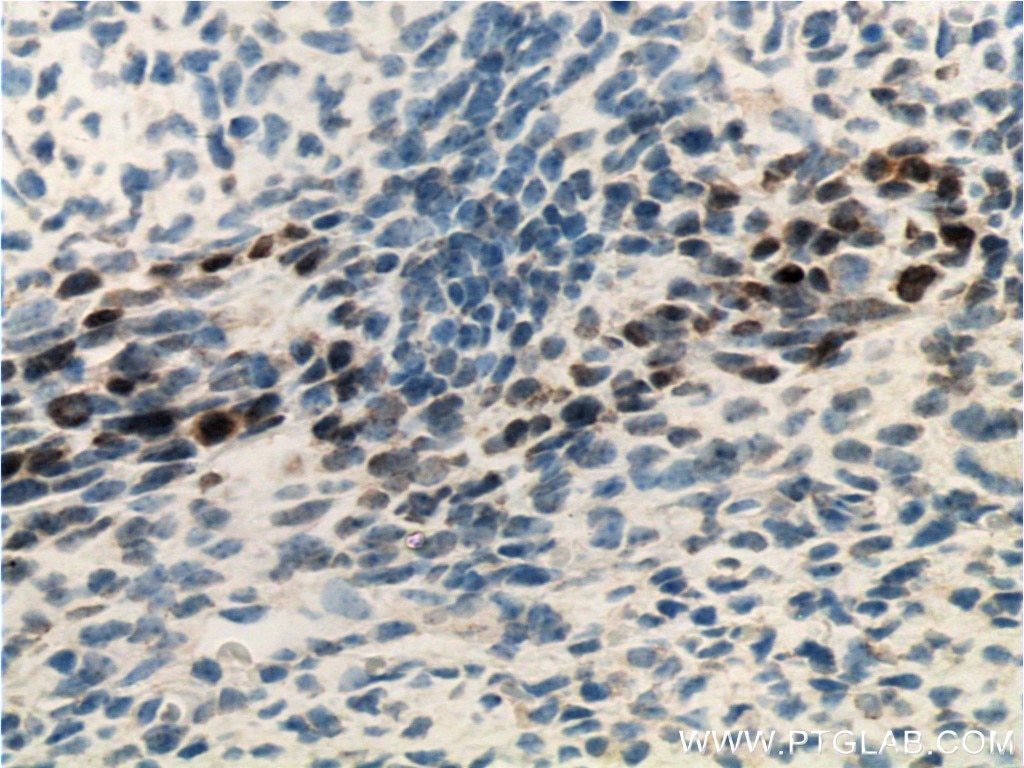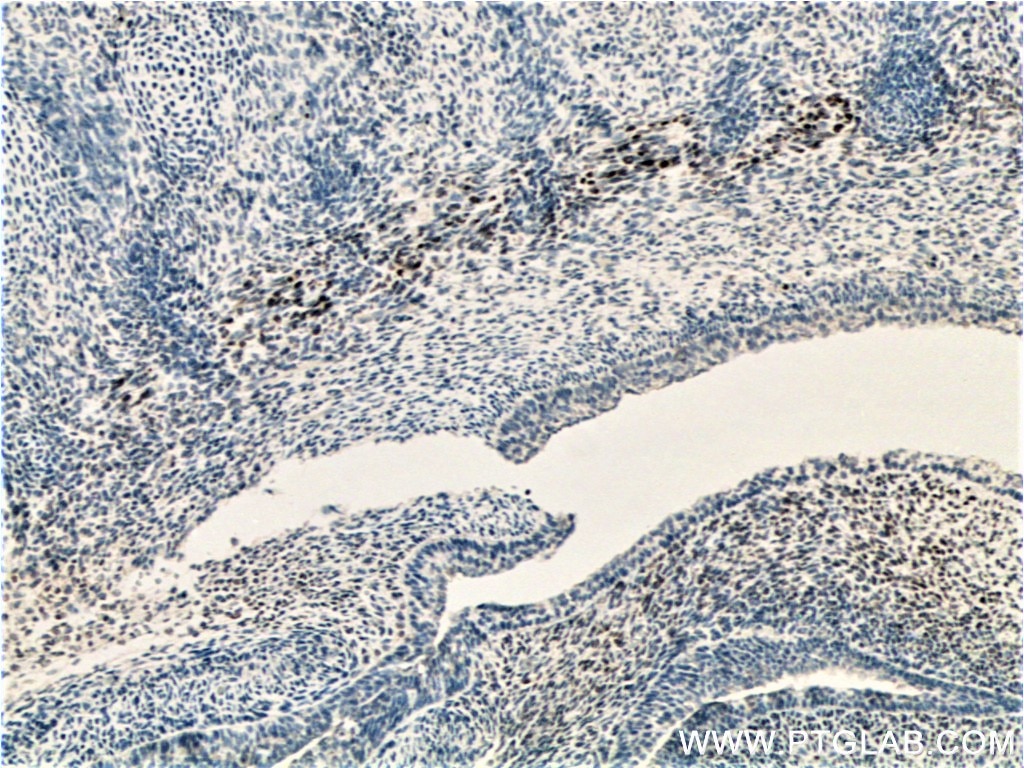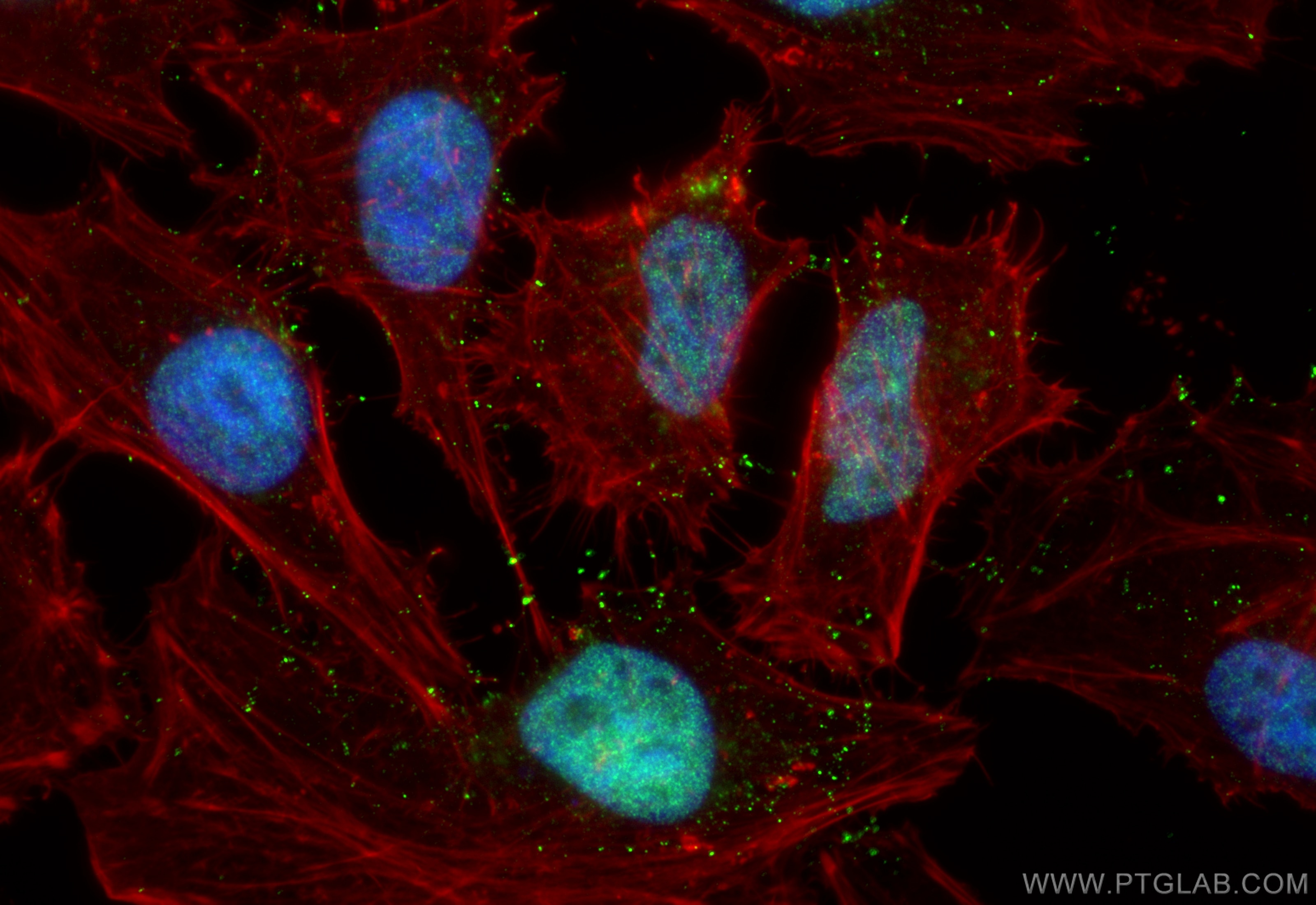Anticorps Monoclonal anti-SIX2
SIX2 Monoclonal Antibody for WB, IHC, IF/ICC, ELISA
Hôte / Isotype
Mouse / IgG2b
Réactivité testée
canin, Humain, porc, rat, souris
Applications
WB, IHC, IF/ICC, ELISA
Conjugaison
Non conjugué
CloneNo.
1F9G11
N° de cat : 66347-1-Ig
Synonymes
Galerie de données de validation
Applications testées
| Résultats positifs en WB | tissu de muscle squelettique de porc, cellules HEK-293, cellules L02, cellules MDCK, cellules NCCIT, tissu de muscle squelettique de rat, tissu de muscle squelettique de souris |
| Résultats positifs en IHC | tissu embryonnaire de souris, il est suggéré de démasquer l'antigène avec un tampon de TE buffer pH 9.0; (*) À défaut, 'le démasquage de l'antigène peut être 'effectué avec un tampon citrate pH 6,0. |
| Résultats positifs en IF/ICC | cellules HeLa, |
Dilution recommandée
| Application | Dilution |
|---|---|
| Western Blot (WB) | WB : 1:1000-1:6000 |
| Immunohistochimie (IHC) | IHC : 1:50-1:500 |
| Immunofluorescence (IF)/ICC | IF/ICC : 1:200-1:800 |
| It is recommended that this reagent should be titrated in each testing system to obtain optimal results. | |
| Sample-dependent, check data in validation data gallery | |
Applications publiées
| WB | See 1 publications below |
| IHC | See 2 publications below |
| IF | See 4 publications below |
Informations sur le produit
66347-1-Ig cible SIX2 dans les applications de WB, IHC, IF/ICC, ELISA et montre une réactivité avec des échantillons canin, Humain, porc, rat, souris
| Réactivité | canin, Humain, porc, rat, souris |
| Réactivité citée | souris |
| Hôte / Isotype | Mouse / IgG2b |
| Clonalité | Monoclonal |
| Type | Anticorps |
| Immunogène | SIX2 Protéine recombinante Ag2124 |
| Nom complet | SIX homeobox 2 |
| Masse moléculaire calculée | 291 aa, 32 kDa |
| Poids moléculaire observé | 37 kDa |
| Numéro d’acquisition GenBank | BC024033 |
| Symbole du gène | SIX2 |
| Identification du gène (NCBI) | 10736 |
| Conjugaison | Non conjugué |
| Forme | Liquide |
| Méthode de purification | Purification par protéine A |
| Tampon de stockage | PBS with 0.02% sodium azide and 50% glycerol |
| Conditions de stockage | Stocker à -20°C. Stable pendant un an après l'expédition. L'aliquotage n'est pas nécessaire pour le stockage à -20oC Les 20ul contiennent 0,1% de BSA. |
Informations générales
The SIX proteins (sine oculis) are a family of homeodomain transcription factors that share a conserved DNA binding domain. Six members (Six1-Six6) of the Six gene family have been identified in mice and humans. SIX2, containing one homeobox DNA-binding domain, is highly expressed in fetal tissues but expression is limited in adult tissues. SIX2 may be involved in limb tendon and ligament development[PMID:21420949]. It has been previously shown that SIX2 is expressed in developing mesenchymal tissue including head and urogenital system at the time of overt midfacial and renal differentiation[PMID: 22282599].
Protocole
| Product Specific Protocols | |
|---|---|
| WB protocol for SIX2 antibody 66347-1-Ig | Download protocol |
| IHC protocol for SIX2 antibody 66347-1-Ig | Download protocol |
| IF protocol for SIX2 antibody 66347-1-Ig | Download protocol |
| Standard Protocols | |
|---|---|
| Click here to view our Standard Protocols |
Publications
| Species | Application | Title |
|---|---|---|
Development Aberrant centrosome biogenesis disrupts nephron and collecting duct progenitor growth and fate resulting in fibrocystic kidney disease | ||
Biochem Biophys Res Commun Disruption of Gen1 causes ectopic budding and kidney hypoplasia in mice | ||
Dev Dyn Glypican-6 and Glypican-4 stimulate embryonic stomach growth by regulating Hedgehog and non-canonical Wnt signaling | ||
Nucleic Acids Res The transcriptional coactivator Eya1 exerts transcriptional repressive activity by interacting with REST corepressors and REST-binding sequences to maintain nephron progenitor identity | ||
J Am Soc Nephrol Chromatin Remodelers Interact with Eya1 and Six2 to Target Enhancers to Control Nephron Progenitor Cell Maintenance |
